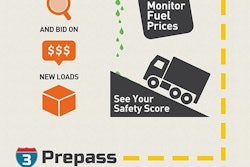(This is part two Bill Wade’s two-part educational feature on service. For part one, CLICK HERE.)
Making GP Increases into ROI or EBITDA Increases
Growing profitability is a challenge requiring thorough understanding of distributor and customer costs in the supply chain, cost of equipment ownership, employee costs and others. Cost-cutting — or changing cost-to-income ratio — also is complex.
Costs that appear to be “low-hanging fruit” can be cut with ill effects. Solutions to harder to find problems — interoperable information systems, ruthless restriction of data and ineffective consolidation of processes — are more likely to have longer lasting effects.
We’ve found that in counseling distributors on cost-to-income ratio improvements, most think first of reducing costs. Revenue enhancing strategies, however, are the more immediately profitable part of this equation. The most effective ways to increase revenues must be well-targeted to bring the organization together in the selling effort.
Timely tracking of sales opportunities and precise understanding of an organization’s sales efforts will lead to more confident decisions and better business outcomes. It also provides a skeleton for appropriate cost and investment build-up.
Simply raising prices on parts and services can obviously have a negative impact on volume. Finding more work through bundling of services can be effective and lead to increased sales of seldom-used services… if customers sense a new efficiency.
Technology that helps segment customers is helpful in knowing where bundled services might be well received. Effective packaging requires knowing which services “lead” customers’ decision making process. To deliver optimized packages, the following questions must be answered:
• Necessity: Which services will the customer refuse to live without?
• Consistency: Which services have long sales cycles, but have proven to be valued by customers who benefited from them… How can we spread the word??
• Efficiency: Which services are expensive to deliver when delivered alone, but delivery costs drop dramatically when bundled with other services?
Unfortunately, the sales logic here can remain hidden. Many distributors gather parts sales and service tie-in data for internal use but fail to report the information to customers or act upon it themselves.
Effective sales tracking will be especially useful to organizations that believe it is important to increase the sales role of their service technicians.
Service skills and sales skills are often not aligned. An organization that tracks sales opportunities and supports people in closing will be more likely to help technicians adapt to this new role.
Integration of sales processes with an organization’s back office is key to increasing the volume of business an organization can handle. It will also position sales or customer service professionals to respond to customers much more quickly and accurately, helping companies overcome barriers their competitors will find difficult to get past.
Measuring Success for Service Customers
In a recent survey of fleet maintenance execs, respondents were asked whether they gathered information on six characteristics of their operations:
• Uptime and equipment availability;
• Cost of down time (including cost of drivers, etc.);
• Time for service provider to ‘respond’;
• Customer satisfaction with solution.
• Mean time between failures;
• Mean time to repair;
Approximately half of survey respondents said they measure only customer satisfaction with the quality of a solution. The most commonly measured activities are the time it takes to respond to a need and overall equipment uptime and availability.
A vast majority said they do not gather data on the mean time to repair (MTTR) nor on mean time to failure (MTBF). While these two ‘mean-time’ measurements are far more popular with static mounted industrial plant equipment, the stats and science behind this maintenance technique have been thoroughly proven. Distributors introducing these concepts to customers will certainly move to the head of the ‘trusted supplier’ line.
Companies that do not measure these things do not know them. Fleets that do not know these things cannot talk specifically with their distributors or other service providers about the effect that repairs have had on their cash flows and revenues. Truck operators that do know these things can. It is that simple.
Conclusion
One of the most frequently missed opportunities to generate loyalty among customers is to report service and satisfaction metrics back to them. Many organizations fear sharing their report cards because they are not living up to what they think are the fleets’ standards.
Customers are people first, and many value dialogue more than the achievement of certain standards. It is ultimately the dialogue between a provider and a customer that grows profits and revenues. Sharing report cards makes that dialogue more open and meaningful and draws the supplier and the customer into a partnership.
Best-in-class distribution and service providers realize the value of integrating their service engineers with their traditional sales and back office functionality. They are empowering their service personnel with up-to-the-minute information that allows them to successfully cross-sell and up-sell in the field.
Rush Enterprises (the most successful franchised truck dealer in the world) recently revealed a major part of their industry-pacing growth. Their October, 2012 report said that aftermarket services accounted for more than 65 percent of the company’s total gross profits for the third quarter of 2012.
Third quarter parts, service and body shop revenues increased by 15 percent compared to previous year. This resulted in another record aftermarket revenue quarter despite fewer working days during the period. Third quarter absorption ratio was 113 percent.
Rusty Rush, CEO was pretty clear about the success of their integrated parts and service strategy. “We remain committed to expanding our service solutions, to meet the evolving needs our customers, whatever they may be.”
Apparently this is no longer deep strategic thinking — it is more like common sense.
Bill Wade is a partner at Wade & Partners and a heavy-duty aftermarket veteran. He is the author of Aftermarket Innovations. He can be reached at [email protected].










